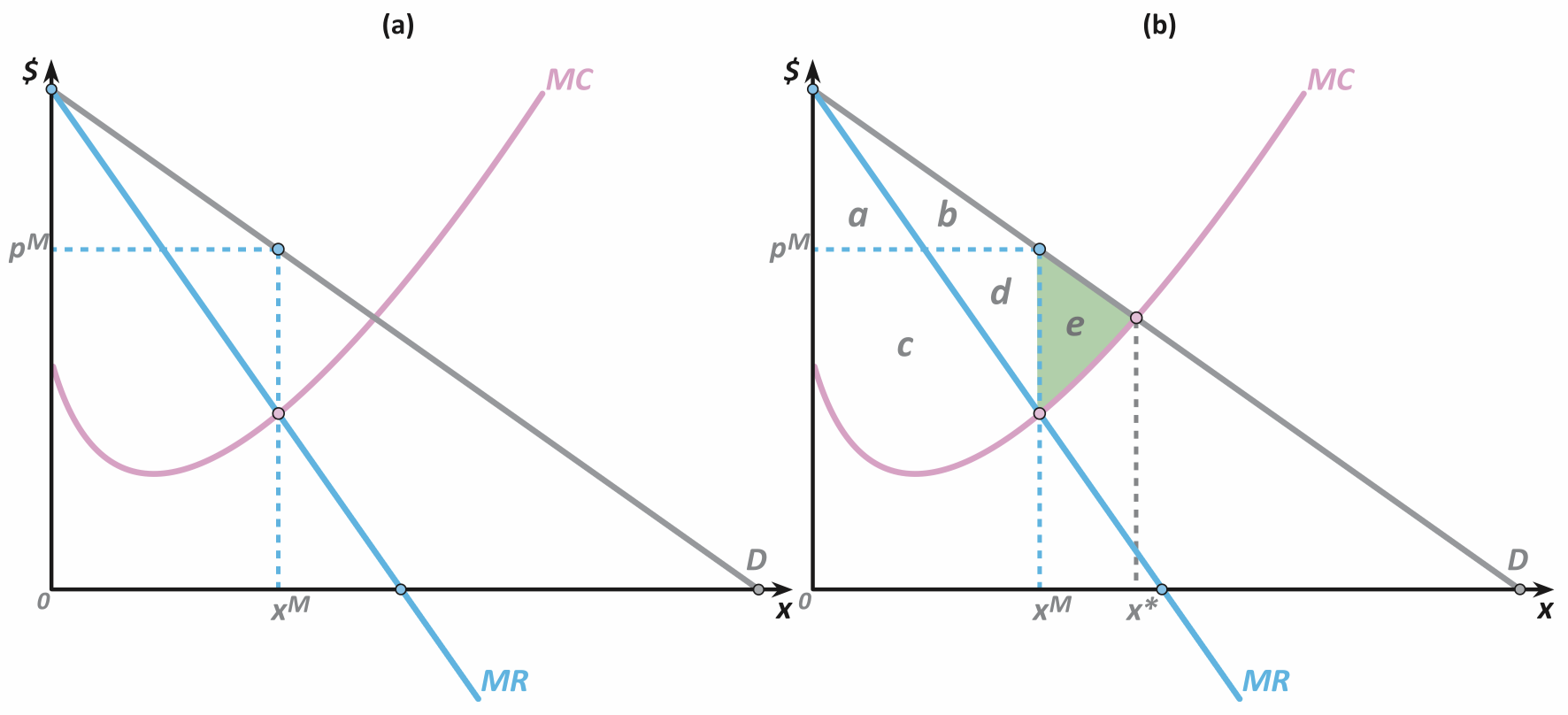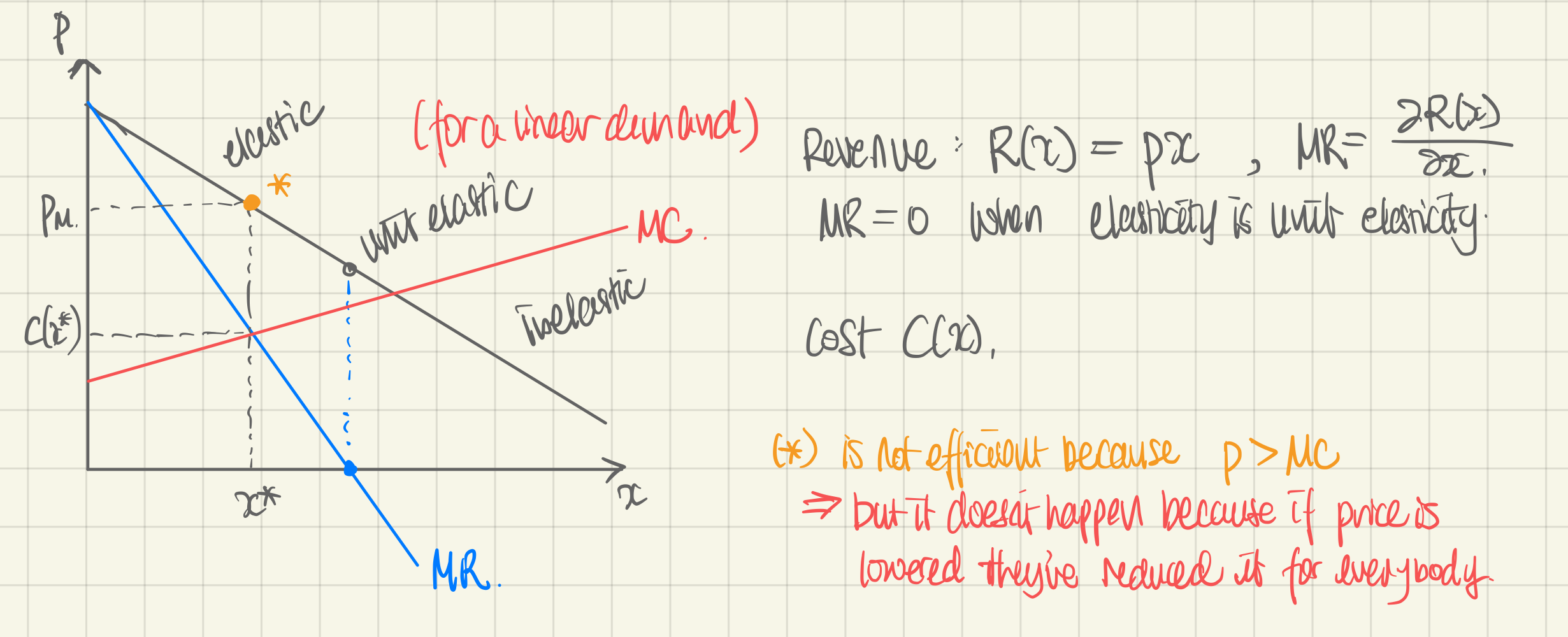Definitions
- Monopoly is when a single firm has all the Market Power. Monopolies normally have:
- High barriers to entry
- Production in elastic portion of demand
- Single firm with market power
- (usually) economies of scale
- A Natural Monopoly is when it’s hard for firms to achieve break-even without a monopoly market strucutre
Market Demand for Monopolies
MR > 0, i.e. where ε > 1
- Monopolies face the whole market demand curve.
- Marginal Revenue (MR) curve will slope down with the same intercept and twice the gradient of the Demand curve.
- Visual Profit Maximization when (See below for math)
- Firm produces (=monopoly quantity)
- Market price settles at (=monopoly price)
- Firm makes profit of
- Deadweight loss is
- DWL happens because monopolist increase price more than optimum

Profit Maximization for Monopolies
Profit maximization for monopolies:
- is the inverse of the Ordinary Demand of goods
- is the Cost Function that is derived w.r.t
- ! Not simply !
- To solve, use Unconstrained Maximization
- First Order Condition:
- This is the same condition as condition.
- ! In third-degree price discrimination, can only be used if is constant.
- When elasticity is constant ⇒ Use the Elasticity condition:
- Elastic: thus excess profit
- Unit elastic: thus zero profit
- Inelastic: thus negative profit (monopolist doesn’t produce)
- First Order Condition:

Price Discrimination for Monopolies
First Degree Price Discrimmination
Everybody pays exactly how much they’re willing to pay.

- Demand curve is same as marginal revenue curve
- Pareto efficient because there is no deadweight loss; everybody pays exactly as they want to pay, and no extra profit is lost
- → but the benefit goes to the monopolist only
Two-part Tariff

- Consumers are made to pay amount A to enter the market
- Then charge consumers
- Same as Equivalent Variation
Process of enforcing the tariff
- Consumers at utility and only buys good
- Firm enters the market and starts selling good at price . The consumer gains utility
- Firm realizes they could get more profit. They charge amount to enter the market. Thus the consumer loses amount of .
- Consumers are back to , but they’re still buying because they’re just as happy as when they only bought .
You can get market ticket price by either
- using Equivalent Variation on the right graph
- using integration on the left graph
Third Degree Price Discrimination
- Idea: Charge differently based on consumer characteristics (=based on Price Elasticity of Demand)
- ⇒ Split consumers into two groups with elasticity and…
- If is constant → use the elasticity condition
- If is not constant → use normal profit maximization:
- You will eventually get and